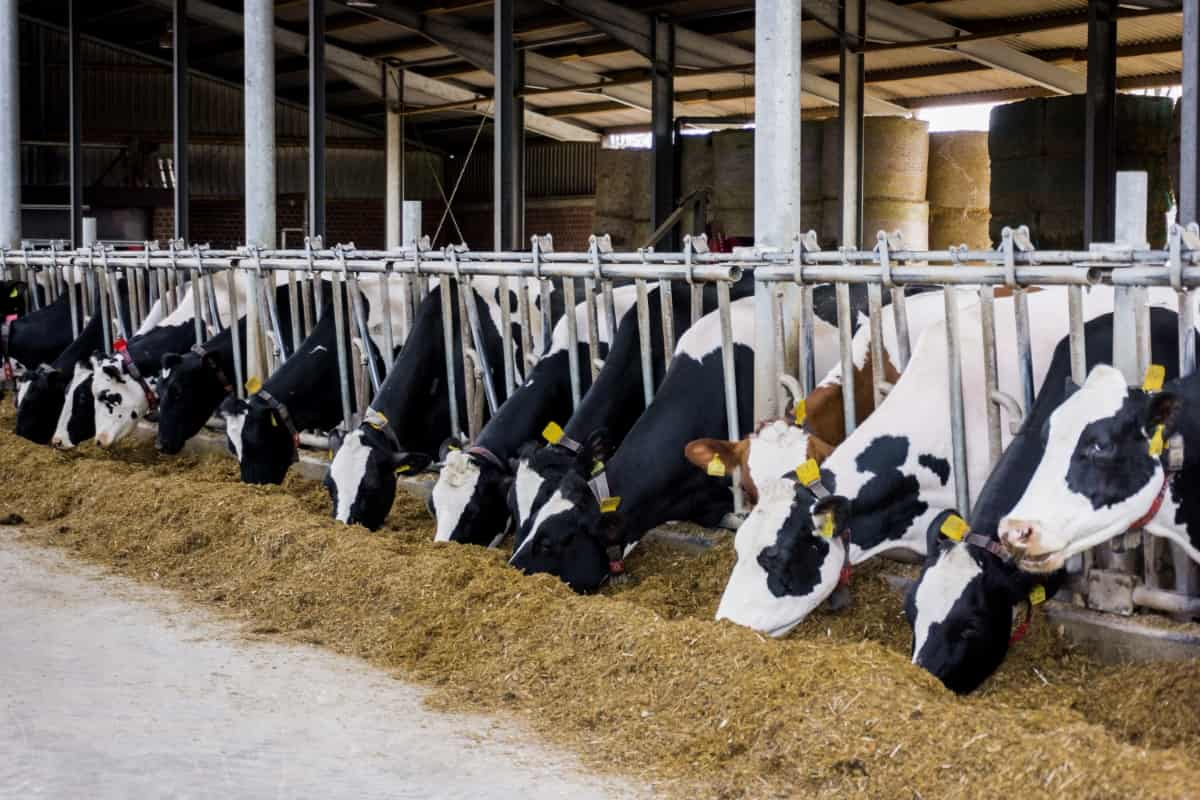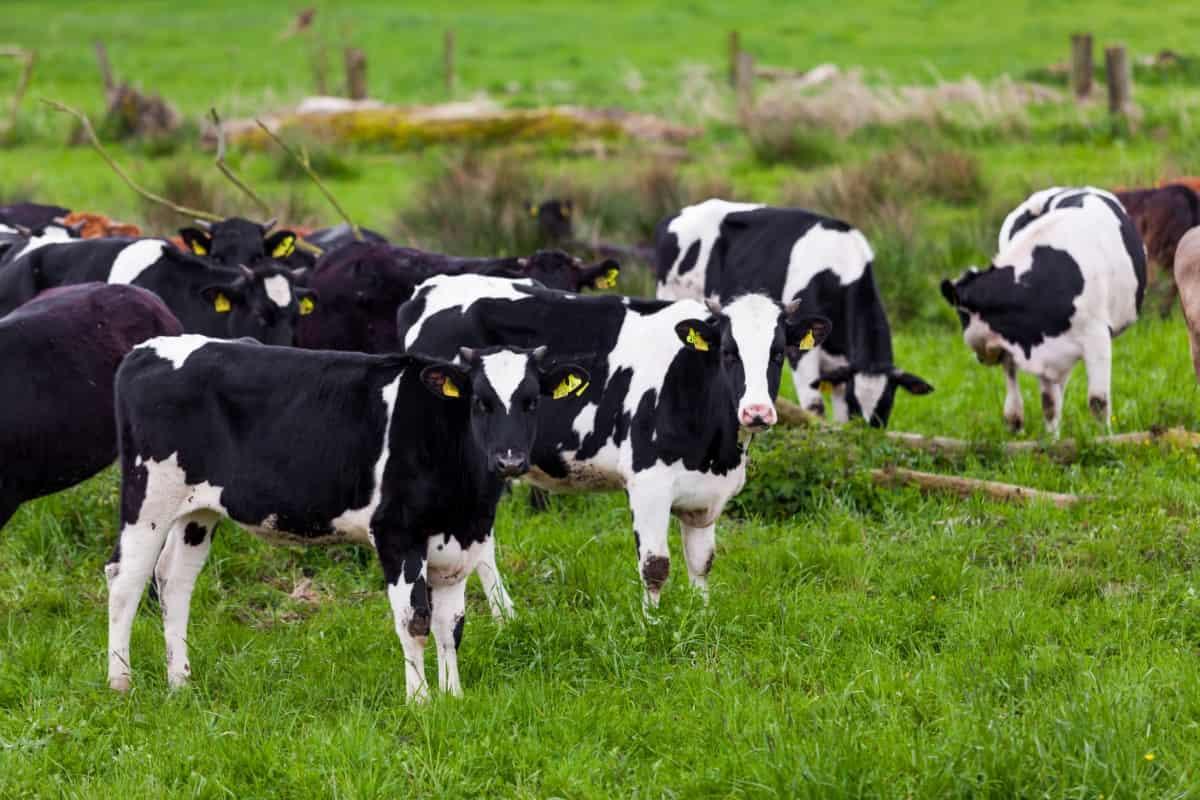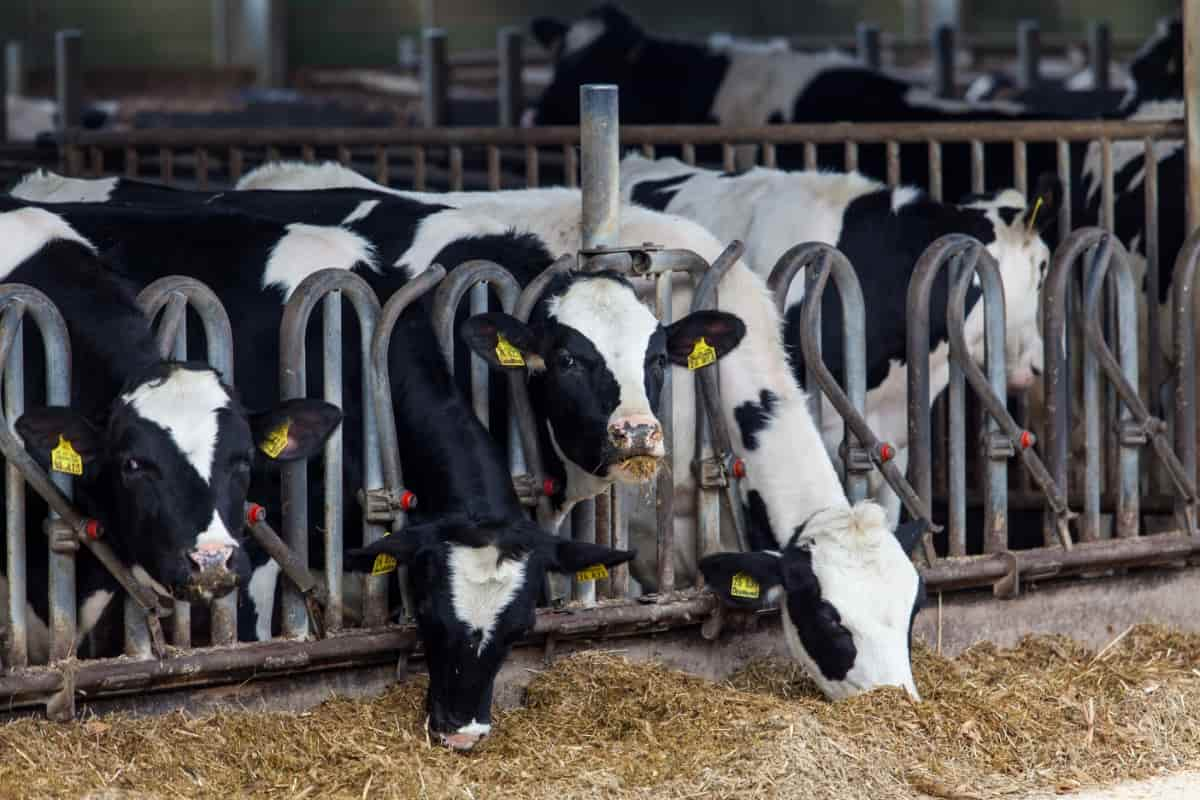Dairy farming, especially a dairy farming project report for 10 cows, is an essential agricultural segment that provides opportunities for small-scale farmers. This article delves into the various aspects of setting up a dairy farm with 10 cows, guided by the principles and recommendations of the Nabard dairy project report.

From choosing the right breed to managing the farm, this guide covers essential factors like infrastructure, feeding, health, breeding, milk production, and marketing strategies. Our focus is on creating a sustainable model that ensures profitability and a return on investment (ROI), which is crucial for the success of any farming venture.
Dairy Farm Project Report
Selection and Management of Dairy Cattle for Small-Scale Farming
Selecting the right cattle is critical for the success of a small-scale dairy farm. Look for breeds known for their milk yield, adaptability to local conditions, and overall health. Holstein Friesians, Jerseys, and local breeds are often preferred. Management involves regular monitoring of their health, ensuring a comfortable living environment, and maintaining a stress-free atmosphere. Proper record-keeping of each animal’s health, milk production, and breeding cycle is crucial for effective management. This helps in making informed decisions about feeding, breeding, and healthcare.
Infrastructure and Equipment for a Small Dairy Farm
Infrastructure is key in a dairy farming project report for 10 cows. You need a well-ventilated barn with separate milking, feeding, and resting areas. Ensure that the barn is easy to clean and maintain. Basic equipment includes milking machines, feeders, water troughs, and manure management systems. Also, a reliable storage system for milk is essential to maintain its quality before it goes to the market. Good infrastructure not only improves productivity but also ensures the well-being of the cattle, which is directly linked to their milk production.
Feeding and Nutrition Management for Dairy Cows
Feeding and nutrition are pivotal in maintaining the health and productivity of dairy cows. A balanced diet ensures high-quality milk and good health for the cows. This includes a mix of forages, grains, minerals, and vitamins. Regular access to clean water is also crucial. It’s important to adjust the feed according to each cow’s lactation cycle and health needs. Consulting a veterinarian or a cattle nutritionist can help formulate the right diet plan. Proper feeding boosts milk production and reduces healthcare costs by keeping the cattle healthy.
Healthcare and Disease Management in Small-Scale Dairy Farming
Healthcare and disease management are critical for the sustainability of a dairy farm. Regular health check-ups, vaccinations, and timely treatment of illnesses are essential. It’s important to maintain hygienic conditions in the barn to prevent the outbreak of diseases. Monitor for illness or distress in the cattle and address them promptly. A good relationship with a local veterinarian can ensure quick and effective healthcare for your dairy herd. Effective healthcare management leads to improved milk production and overall farm profitability.
In case you missed it: Equipment Needed for Dairy Farming: A Basic Guide for Beginners

Breeding and Reproduction Strategies for Dairy Cattle
Effective breeding and reproduction strategies are vital for maintaining a productive dairy herd. Understand the breeding cycle of the cows and use efficient methods like artificial insemination or natural breeding with a healthy bull. Keeping track of each cow’s reproductive health and cycles aids in timely breeding. It’s also essential to care for pregnant cows and ensure their nutrition and health needs are met. Successful breeding results in a steady addition of young, productive cows to your herd, which is essential for the sustainability and growth of the dairy farm.
Milk Production and Quality Control in Small Dairy Farms
Milk production and quality are the cornerstones of a successful dairy farming venture. Ensure the cows are milked regularly and the equipment is clean to maintain milk quality. Implementing practices like testing milk for bacterial count and ensuring proper cooling can enhance the quality of the milk. Efficient milk production balances good cattle breed, proper feeding, and effective farm management. Smallholder dairy farmers can maximize their milk yield by focusing on these aspects while ensuring the highest quality standards.
Marketing and Sales Strategies for Dairy Products from a Small Farm
Developing effective marketing and sales strategies is crucial for the profitability of a small-scale dairy farm. Identify your target market, whether it’s local communities, dairy cooperatives, or retail markets. Building a good relationship with customers and understanding their preferences can help you tailor your products.
In case you missed it: Mudra Loan for Dairy Farm in India: Explained in 10 Steps for Eligibility to Sanctioning

Offering fresh, high-quality milk and possibly diversifying into dairy products like cheese or yogurt can attract more customers. Effective marketing, combined with quality products, helps establish a strong customer base, ensuring a steady income for the farm. Successful marketing is about understanding customer needs and consistently meeting them with your products.
Financial Planning and Management for a 10-Cow Dairy Farm
Effective financial planning and management are vital for the prosperity of a dairy farm. This is especially true for a dairy farming project with 10 cows. To understand such a project’s profitability and financial dynamics, we will dive into a detailed calculation, focusing on the initial investment, ongoing expenses, milk production and sales, and ultimately, the return on investment (ROI). This example is based on the Indian market and currency (Indian Rupees).
Calculate the Initial Investment
- The initial investment is critical, encompassing costs like purchasing cows, building a shed, acquiring milking equipment, and setting up the necessary infrastructure.
- Assuming the cost per cow is ₹1,00,000, for 10 cows, this totals ₹10,00,000.
- Additional infrastructure costs are estimated at ₹5,00,000.
- Thus, the total initial investment amounts to ₹15,00,000.
Calculate the Ongoing Expenses
- These expenses include feeding, maintenance, veterinary costs, electricity, water, and staff salaries.
- Assuming a monthly expense of ₹50,000.
Calculate the Milk Production
- On average, if each cow produces 20 liters of milk per day, for 10 cows, the total production is 200 liters per day.
Calculate the Milk Sales
- With the market price of milk at ₹40 per liter, daily sales amount to ₹8,000 (200 liters x ₹40).
Calculate the Daily Income
- The daily income from milk sales is ₹8,000.
Calculate the Daily Profit per Month
- To ascertain the monthly profit, subtract the ongoing expenses from the monthly income (30 days).
- The calculation is 30 x ₹8,000 – ₹50,000, totaling ₹1,90,000 per month.
Calculate the Annual Profit
- The annual profit is the monthly profit multiplied by 12.
- This equals ₹1,90,000 x 12, totaling ₹22,80,000 per year.
Calculate the Return on Investment (ROI)
- ROI is a crucial metric calculated by dividing the annual profit by the initial investment.
- This is ₹22,80,000 ÷ ₹15,00,000, resulting in an ROI of 1.52.
Based on these calculations, the dairy farming project with 10 cows in Indian Rupees exhibits significant profitability, with an ROI of 1.52. This indicates that the farmer can expect to earn a profit of 1.52 rupees for every rupee invested in the project. However, it’s important to note that these figures are model estimates, and the actual profitability can vary based on factors like cow breeds, management practices, market price fluctuations, and location-specific variables.
In case you missed it: Feed Management in Dairy Farming: Feeding Plan, Feed Formula, and Feed Requirements

Conclusion
When carefully planned and managed, a dairy farming project with 10 cows can be a profitable venture with a substantial ROI, as demonstrated through the detailed financial analysis. However, actual success depends on effective management, market conditions, and the ability to adapt to the unique challenges of dairy farming.
- Ultimate Guide to Ossabaw Island Hog: Breeding, Raising, Diet, and Care
- Ultimate Guide to Juliana Pig: Raising Facts, Size, Diet, Care, and Lifespan
- Raising Lleyn Sheep: Disadvantages, Price, Uses, Characteristics, and Care
- Ultimate Guide to Meishan Pig: Breed Facts, Breeding, Raising, and Care
- Ultimate Guide to Teacup Pigs: Raising, Diet, Lifespan, Cost, and Care
- Guide to Raising Poll Dorset Sheep: Facts, Profile, Characteristics, Uses, and Care
- Ultimate Guide to Bighorn Sheep: Characteristics, Diet, Lifespan, Breeding, and Lifecycle
- Ultimate Guide to Raising Katahdin Sheep: Farming Facts, Breed Profile, Uses, and Care
- Ultimate Guide to Raising Oreo Cows: Belted Galloways Farming Facts, Profile, Uses, and Care